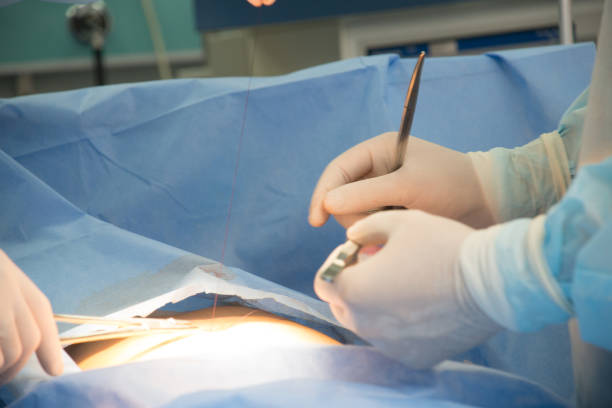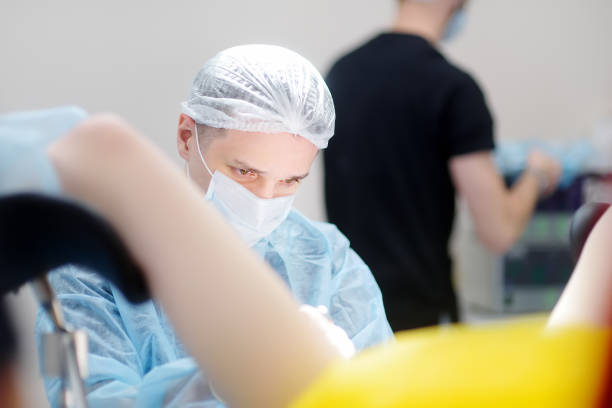
When to remove cysts, Common skin or internal growths are known as cysts and often go unnoticed. Although some are harmless, others may cause discomfort, Disease, or cosmetic concern. Every time you wonder when to remove cysts, you need to look into the size, the pain, the disease, and the chances of complications. Early evaluation will avoid further problems and make the treatment process smoother. In this article, we will explore the key signs that suggest cyst removal, the treatment options, and all signs indicating when to remove cysts and when you should seek professional help.
Signs You Should Remove Cysts
Pain or Discomfort
Cysts may cause pain or discomfort, and they may need to be removed. If the pain indicates that the cyst is pressing on surrounding tissues or nerves, it may also indicate an Disease or inflammation. Cysts in high-friction areas such as the armpits or groin can be very uncomfortable and may need treatment to get rid of them.
Rapid Growth
A cyst that grows quickly may be a sign of a problem. Most cysts stay small and harmless, but fast-growing ones can make it move, give it noticeable swelling, or worse, indicate a more serious medical condition. The doctor can tell if removal is necessary by the size and pattern of the cyst’s growth.
Disease or Inflammation
A red, swollen, and warm-to-the-touch cyst is often contaminated. It may also produce pus or fluid, which can lead to pain and discomfort. If untreated, an Disease can progress to abscess formation and require urgent medical treatment. In such cases, the best thing for them is to remove the cyst to avoid further complications.
Recurring Cysts
The cysts will come back even after they shrink or drain independently. If a cyst keeps forming in the same spot, remove it to avoid repeated discomfort and Disease. If the cysts recur, the problem is connected to the skin or with blocked glands, and you will need to see a professional.
Cosmetic Concerns
Cysts located on visible parts of the body, such as the face, neck, or hands, can affect self-confidence. Removal is a choice; many people get it removed to get smoother and blemish-free skin. If you see a cyst as an actual problem because of its appearance, a good choice is to consult a dermatologist for removal options.
When to See a Doctor for Cyst Removal

Persistent or Growing Cysts
Seek medical advice if a cyst does not go away and keeps growing over time. Larger cysts can become painful, and their removal is preferable. A doctor can tell whether the cyst is benign or needs further examination.
Signs of Disease
An Disease of a cyst can cause it to become red, swollen, and painful or to start leaking pus. Complications may occur when the Disease spreads and goes untreated. You should see a doctor immediately if you see warmth around the cyst or have a fever.
Painful or Interfering with Daily Life
Professional evaluation is recommended when cysts are present in areas that rub against clothes or cause discomfort when moving. If the cyst is painful or prevents motion, removing it may improve comfort and quality of life.
Changes in Appearance
A cyst should be examined if it changes color, shape, or texture. Most cysts have no severe conditions, but others can have unusual changes, and more tests may be needed.
Recurring or Multiple Cysts
Cysts that come back in the same place or several cysts that form over time are more common in some people. If this occurs often, a dermatologist or healthcare provider can advise the most adequate means of treatment and /or removal of the condition to avoid recurrence.
Types of Cyst Removal Treatments
Cyst removal has several treatment options, each intended for a separate type of cyst. Treatment is chosen based on the cyst’s size, location, whether it’s contaminated, and the patient’s choice. The most common methods used to remove cysts are given below.
1. Treatments Excision
Treatments excision is one of the most effective and definitive methods of removing a cyst. This procedure entails making a small hole in the skin, draining the cyst’s contents, and removing the entire cyst sac. This method prevents the cyst from recurring. This excision is usually done under local anaesthesia and is a quick and relatively low-risk procedure. If the cyst is removed, you may need some stitches, which may take a day or two to heal. Treatments excision is a good option, especially for larger cysts or those very bothersome. In most cases, the cyst leaves little or no scarring, but the location and size of the cyst can affect this.
2. Drainage Procedure
Cyst drainage is sometimes performed, such as with inflamed or fluid-filled cysts. In this procedure, the incision is small and is made to drain out the cyst’s contents. The sac itself is not removed as the cyst empties so that it may recur. Cysts that are contaminated or causing pain usually drain to relieve symptoms quickly. While the cyst sac is left in place, this approach is not as permanent as excision and is not always a suitable means of preventing recurrence.
3. Laser or Electrocautery Removal
Smaller cysts are treated with laser and electrocautery treatments, especially on delicate or visible areas of the skin, such as the face. The treatments involve using heat or light energy to break the cyst tissue down and destroy it. Minimally invasive laser cyst removal does not result in much scarring. Because it is so effective, it is most useful for cysts near the skin’s surface and has a short recovery time. This is also a treatment method that will reduce inflammation and reduce the risk of Disease. Another option is electrocautery, which uses electric currents to remove cysts, similar to laser treatment, which minimizes scarring and helps heal faster.
4. Corticosteroid Injections
Cysts that are inflamed or causing pain are usually treated with corticosteroid injections, but these do not treat the cyst. The corticosteroid instead reduces swelling, relieves pain, and shrinks the cyst. It is often advised that this method be used in small cysts or those that require no Treatments intervention. Excision or drainage is less invasive than corticosteroid injections. However, they do not altogether remove the cyst and may not fully resolve symptoms. However, when coupled with other treatments, they can significantly alleviate symptoms.
3. Home Remedies and When to Avoid Them
Some people treat the cysts at home with warm compresses, which will help reduce swelling and encourage drainage. However, these remedies are not suitable for larger or more painful cysts. It is not wise to try to pop or drain a cyst yourself; you can risk Disease, scarring, and more problems. Consult a healthcare professional before trying any home remedy for cysts, especially if they are painful, growing, or appear to have an Disease..
The Cyst Removal Procedure: Step-by-Step Guide
Cyst removal can be a simple procedure, but knowing what to expect before, during, and after the treatment is essential. Here is how the process of cyst removal is done step by step:
1. Pre-Treatment Consultation and Preparation
A cyst removal procedure must be discussed with a qualified healthcare professional or dermatologist before any procedure occurs. The cyst is examined, and your doctor discusses your medical history and whether the cyst needs to be removed. The cyst will be carefully described, and then they will talk about the treatment options available — Treatments excision, drainage or laser removal — and their approach will be to help you pick which fits best with the size of the cyst, the type, and the site.
Medications that affect how well you heal and raise your risk of bleeding may be avoided before the procedure. He will also tell you if any pretreatment steps are needed, for example, cleansing the area of a cyst or applying a topical antiseptic to avoid Disease. Depending on how the area is removed, local anaesthesia will numb the area and make the procedure pain-free.
2. The Cyst Removal Process
The actual removal procedure starts only when the area is adequately prepared. If Treatments excision is performed, the doctor will make a small incision over the cyst. The cyst will be drained with great care, and the entire cyst sac will be removed to prevent recurrence. The cyst will be punctured, and the fluid inside removed; the sac will stay in place for drainage procedures. Laser cyst removal may be chosen, and the laser will destroy the cyst tissue with minimal invasion and precision.
It is usually a quick procedure that takes about 15 to more than 45 minutes, depending on the size and location of the cyst. You may feel some pressure or mild discomfort during the process, but this is generally painless as the local anaesthesia will make the process as painless as possible.
3. Post-Procedure Care
When the cyst has been removed, the treatment area will be cleaned and bandaged to prevent Disease. In cases of excision, stitches may be needed to close the incision, which will be removed in a follow-up visit. The recovery time is shorter if laser or drainage treatment is used, and no stitches are needed.
Specific aftercare instructions will be given to ensure proper healing. It may include how to clean the wound, how often to change the pad, and what to avoid, like strenuous work that will aid in proper healing. Sometimes, pain relief is prescribed if needed.
4. Follow-Up Appointments
Following your procedure, a routine follow-up schedule will be made to check the healing process. During these visits, your doctor will examine you for signs of Disease, confirm that the cyst has not come back, and remove any stitches, if any. The amount of follow-up care after removal depends on the type of cyst and the removal method used. Attending these appointments is vital to ensure the site heals where the cyst came out correctly and addresses potential problems early.
Benefits of Cyst Removal Treatment
Cyst removal offers many benefits, making it a favorite choice for many who have cysts. Here are some key advantages of opting for cyst removal that will improve your comfort and help you avoid health risks.

1. Prevention of Recurrence
Prevention of recurrence is one of the most notable advantages of cyst removal. Cysts can reoccur in many cases if not removed in total. Cyst removal through Treatments removal, laser removal, or drainage procedures to ensure that the cyst is removed or drained completely, to significantly reduce the chances of it returning. For those who suffer from recurring cysts, it is essential because they do so frequently.
2. Relief from Pain and Discomfort
Larger cysts may cause pain or discomfort on their own or if they push against other tissues. The irritation, swelling, or even restriction of movement in specific areas such as the head, face, or joints can result from this kind of medicine. Cyst removal usually relieves the pain and discomfort, dramatically improving the patient’s quality of life.
3. Improved Aesthetic Appearance
Some of these cysts can occur on visible parts of the body, including the face, neck, or hands, and may cause a person to be negatively affected by their appearance. Sebaceous cysts are one of several causes of lumps under the skin that can become noticeable, even with small cysts. A cyst removal can eliminate these blemishes and return the skin to a more natural look, which is critical to those who have spent considerable time trying to hide the cosmetic blemishes of their cyst.
4. Reduced Risk of Disease
contaminated cysts can cause complications, including abscess, increased pain, or the spread of Disease to other parts of the body. Removing the cyst ultimately reduces the risk of Disease, and it can be done with Treatments cyst removal or other treatments. Draining regularly helps reduce inflammation or drainage of pus and reduces the chances of disease and other health problems.
5. Minimal Scarring with Modern Techniques
Cyst removal methods have advanced from laser treatment to more effective and less invasive methods. Laser removal is a minimally invasive procedure that utilizes a focused light to remove cyst tissue. This technique is usually associated with minimal scarring compared to conventional excision methods. In addition, if good aftercare is used, scarring can be limited, and there should be little trace of the cyst removal.
6. Faster Healing Time
Laser cyst removal is also minimally invasive, so there is a faster healing time than other methods. Usually, patients experience less pain, fewer complications, and quicker recovery. This is especially helpful for those expected to resume their routine quickly, as minimal downtime is needed.
7. Enhanced Skin Health
Cysts may also cause skin problems, such as acne, irritation, etc., especially if they are significant or in the face. Clearing these cysts can help skin health and make it appear more transparent, healthier, and less prone to future skin issues caused by the cysts or their contents.
8. Improved Overall Health
Cysts are not dangerous, but some may contain harmful bacteria or toxins. These can occasionally develop into other, worse health problems if they’re left untreated. If you choose to remove the cyst, it will minimise the chances of any potential health risks, and you will maintain your overall health.
Why Choose Revitalise London for Laser Cyst Removal?
Revitalise London is an advanced laser cyst removal treatment focused on providing a fast recovery with minimum discomfort and precision. Our team does everything with elements of cutting-edge technology, and with the help of our expert team, each procedure is tailored around your unique needs. Our goal is to utilise our commitment to provide the highest levels of care while achieving excellent results comfortably and safely.
We give them personalised care and ensure every patient feels confident throughout treatment. Whether you are dealing with a small cyst or need more extensive treatment, Revitalise London will provide you with treatment that prioritises your health, comfort, and satisfaction.
